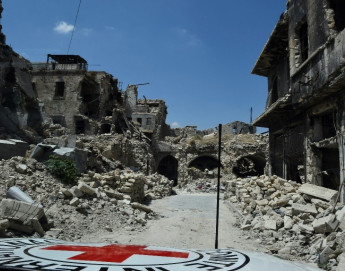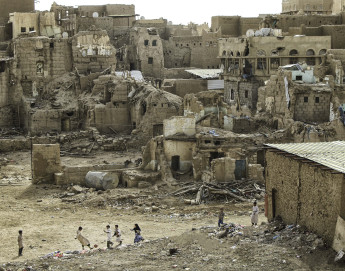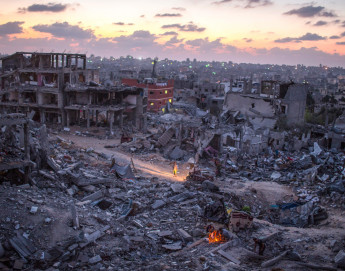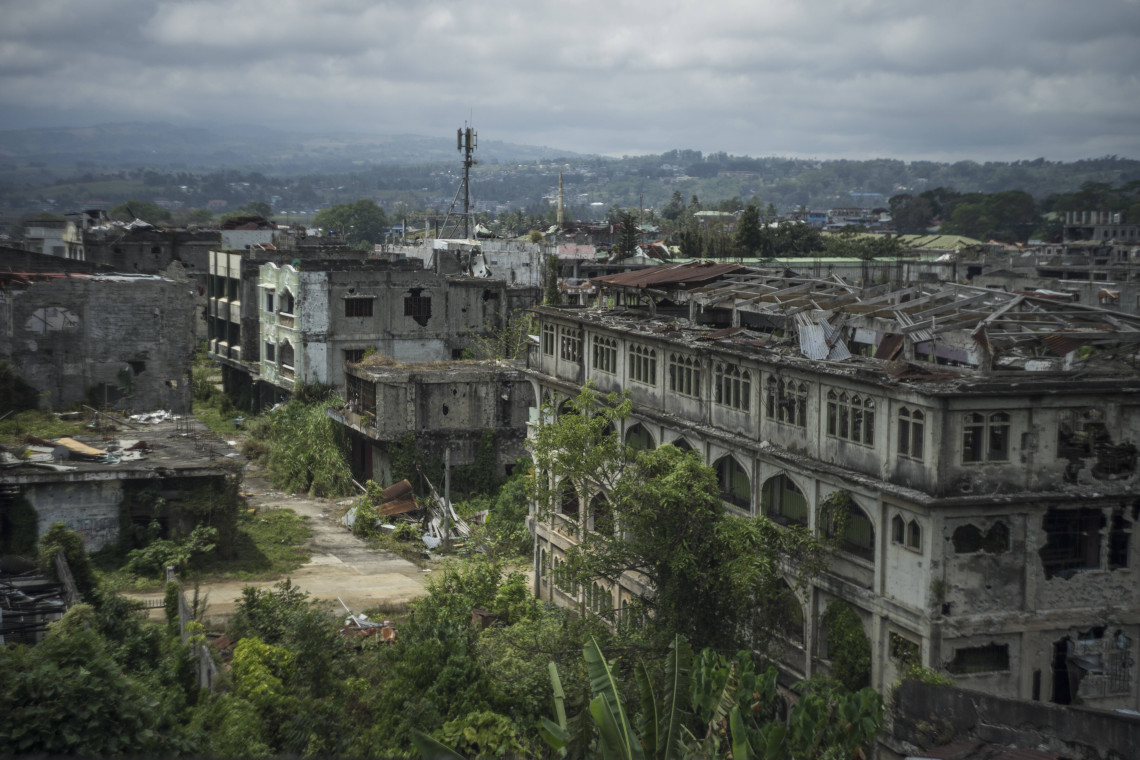
Present and engaged: How the ICRC responds to armed conflict and violence in cities
The International Committee of the Red Cross (ICRC) continues to bear witness to the cumulative impact of war and violence on cities. Besides causing injuries and death, urban warfare and urban violence damage or destroy homes and critical infrastructure, jeopardizing people's access to water, power, communication, sanitation, health, and other services. Places previously safe – like schools – are contaminated with mines and unexploded and abandoned ordnance and become hazardous. Families are forced to flee, sometimes repeatedly. Recovery and reconstruction can take decades, impeding sustainable development.
Over the past decade, often with other components of the Red Cross and Red Crescent Movement, the ICRC has been developing its thinking and approaches with regard to responding to the humanitarian needs created by protracted urban warfare and urban violence. These approaches include dialogue with political authorities and weapon bearers in relation to their international obligations (notably, under international humanitarian law) and the protection of civilians more generally; measures to ensure that essential services can continue; and dealing with urban displacement and the impact of mines and unexploded and abandoned ordnance.
"The sound of warfare is constant. Buildings are struck, and shrapnel flies everywhere. This is the situation every person in the city faces." ICRC colleague in Mariupol, a city in Ukraine
In a new policy paper, we take stock of our experience and share five lessons related to improving humanitarian responses to the impact of armed conflict and violence in cities.
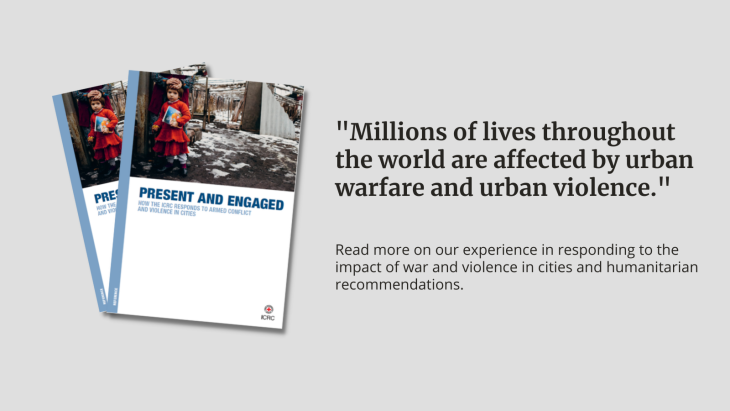
What have we learnt while responding to the humanitarian consequences of urban warfare and violence?
Different legal frameworks apply to situations of 'urban warfare' and 'urban violence', and the short and long-term consequences of these situations often differ too. However, five imperatives concerning effective humanitarian action apply equally to urban warfare and urban violence situations.
Humanitarian responses must:
• take into account the distinct nature of the humanitarian needs in cities;
• support individuals and the urban systems they depend on;
• combine short and long-term approaches;
• be multidisciplinary;
• mobilize and enable other actors to maximise impact.
The higher humanitarian stakes in cities – the cumulative impact on large numbers of people and the interconnected systems on which they depend – heighten both the challenges and the importance of putting these hallmarks of effective humanitarian action into practice. They will continue to guide the ICRC's own action, and we encourage other humanitarian actors to consider them in theirs.

